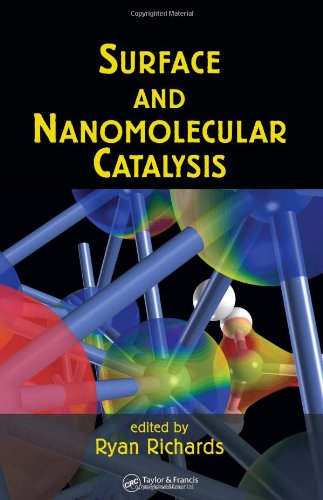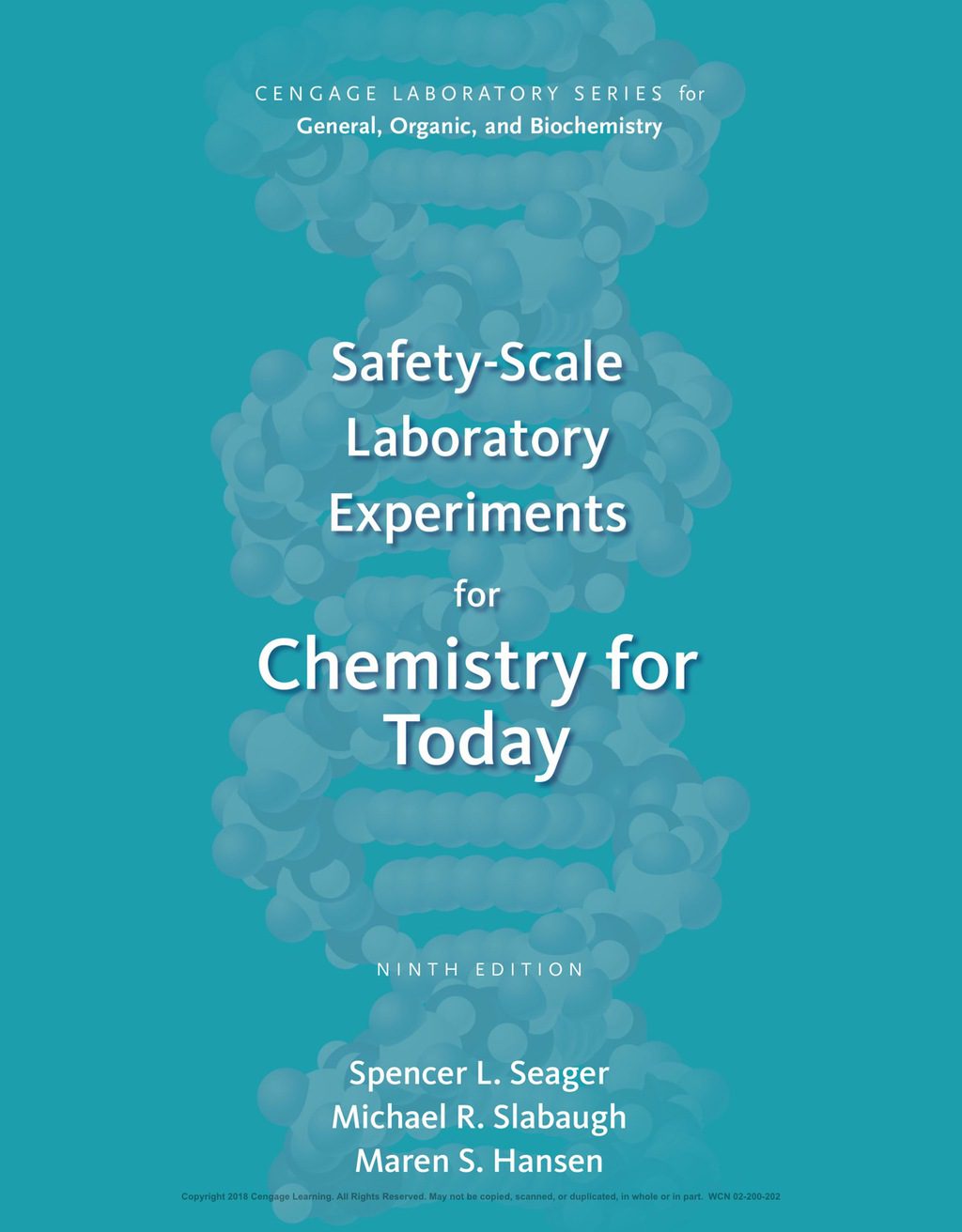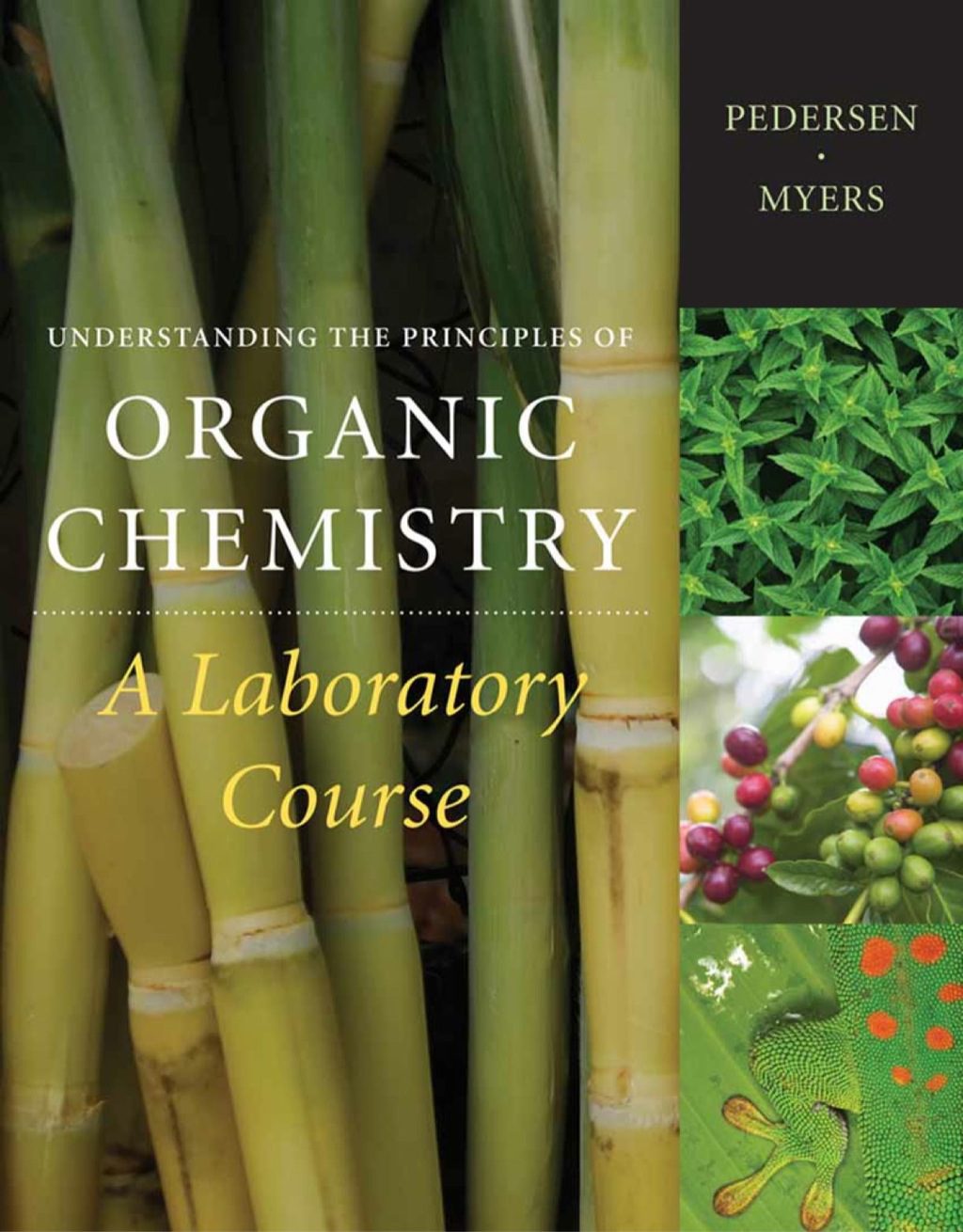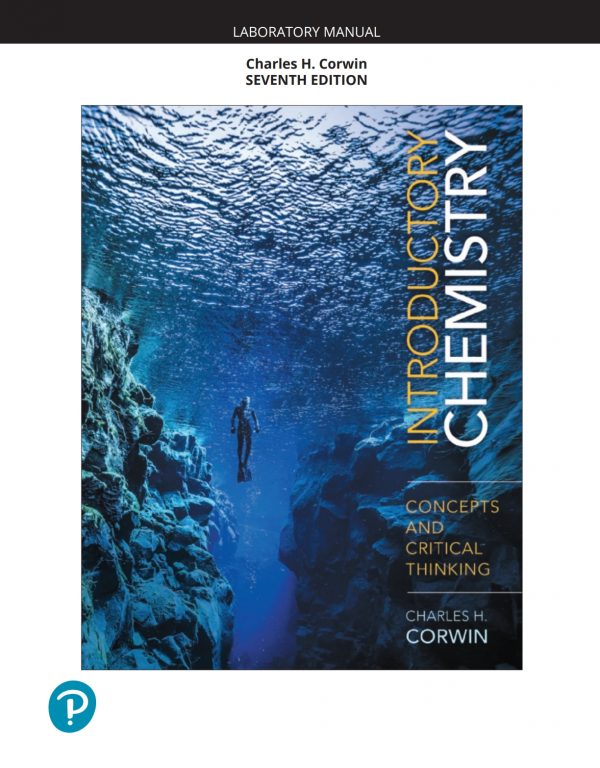Ryan Richards1574444816, 9781574444810, 3131402911, 9783131402912, 1588903060
The book describes how the size and shape of materials at the nanoscale can change their chemical and physical properties and promote more efficient reactions with fewer by-products. First it highlights the preparation, characterization, and applications of heterogeneous and supported metal catalysts. Then it covers the engineering of catalytic processes, structure and reaction control, and texturological properties of catalytic systems. The authors explain how surface science can elucidate reaction mechanisms and discuss the growing role of high-throughput experimentation and combinatorial approaches in catalysis.
From fundamental concepts to future directions, Surface and Nanomolecular Catalysis offers a well-rounded compilation of noteworthy developments which will continue to expand and transform our understanding of catalysis, particularly in the context of clean energy and environmental applications such as fuel cells.
Table of contents :
SURFACE AND NANOMOLECULAR CATALYSIS……Page 1
Dedication……Page 3
Preface……Page 4
The Editor……Page 6
Contributors……Page 7
Contents……Page 9
CONTENTS……Page 11
Table of Contents……Page 0
1.2.1 X-Ray Diffraction……Page 12
1.2.2 X-Ray Absorption Spectroscopy……Page 13
1.2.3 Electron Microscopy……Page 15
1.3.1 Surface Area and Pore Structure……Page 17
1.3.2 Temperature-Programmed Desorption and Reaction……Page 18
1.3.3 Thermogravimetry and Thermal Analysis……Page 19
1.3.4 Microcalorimetry……Page 20
1.4.1 Infrared Spectroscopy……Page 22
1.4.2 Raman Spectroscopy……Page 23
1.4.3 Ultraviolet–Visible Spectroscopy……Page 25
1.4.4 Nuclear Magnetic Resonance……Page 26
1.4.5 Electron Spin Resonance……Page 28
1.5.1 X-Ray and Ultraviolet Photoelectron Spectroscopies……Page 29
1.5.2 Auger Electron Spectroscopy……Page 30
1.5.4 Secondary-Ion Mass Spectroscopy……Page 31
1.6 MODEL CATALYSTS……Page 32
1.7 CONCLUDING REMARKS……Page 35
REFERENCES……Page 36
Question 3……Page 42
Question 5……Page 43
Question 7……Page 44
Question 9……Page 45
Question 11……Page 46
Question 12……Page 47
CONTENTS……Page 48
2.2 PROPERTIES OF METAL OXIDES……Page 49
2.2.2 Insulators (Highly Ionic)……Page 50
2.2.4 Crystal Structures……Page 51
2.3.1 Surface Reconstruction……Page 53
2.3.2 Defect Sites……Page 55
2.4 SOLID ACIDS AND BASES……Page 57
2.4.2 Oxygen Anions as Lewis Bases……Page 58
2.4.4 Spectroscopic Methods of Detecting Lewis Acidity/Basicity and Bronsted Acidity/Basicity……Page 59
2.5.1.1 Hydrogen –Deuterium Exchange Reaction……Page 60
2.5.1.2 Hydrogenation (1,3-Butadiene + D2)……Page 61
2.5.1.5 Benzylation……Page 62
2.5.2.1 Oxidative Dehydrogenation — Vanadia……Page 63
2.5.2.2 Oxidative Coupling of Methane……Page 64
2.5.3.2 Freons……Page 65
REFERENCES……Page 66
Question 8……Page 70
3.1 INTRODUCTION……Page 71
3.3 MODES OF STABILIZATION……Page 72
3.4 REDUCTION METHODS……Page 74
3.5.2.1 Precursor Concept……Page 82
3.5.2.2 Conditioning: A Key Step in Generating Active Catalysts……Page 83
3.5.2.3 Heterogeneous Catalysts in Catalysis……Page 84
3.5.2.4 Fuel Cell Catalysts……Page 91
3.6 CONCLUSION……Page 93
REFERENCES……Page 94
Question 5……Page 102
CONTENTS……Page 103
4.1 SETTING THE SCENE……Page 104
4.3.1 What Are Zeolites?……Page 105
4.3.2.1 Zeolite X and Zeolite Y……Page 109
4.3.2.3 Mordenite……Page 110
4.3.3 Production of Zeolites……Page 111
4.3.4.1 Protonation of Zeolites……Page 113
4.3.4.3 Metals and Metal Complexes in Zeolites……Page 114
4.3.5 Catalytic Application of Zeolites……Page 115
4.3.5.1 Zeolite Catalysts in Petrochemical Processes……Page 117
4.3.5.1.1 Fluid Catalytic Cracking……Page 118
4.3.5.1.2 Hydrocracking……Page 121
4.3.5.1.3 Isomerization of n-Paraffins……Page 122
4.3.5.1.5 Aromatization of Liquefied Petrol Gases……Page 124
4.3.5.2 Methanol to Gasoline and Methanol to Olefins……Page 125
4.4.1 Ordered Mesoporous Silica Materials……Page 126
4.4.1.1 Surface Modifications of Ordered Mesoporous Silica Materials……Page 130
4.4.1.2 Catalysis with Ordered Mesoporous Silica Materials……Page 131
4.4.2 Nonsiliceous Ordered Mesoporous Materials……Page 133
4.5 CHARACTERIZATION OF MICROPOROUS AND MESOPOROUS MATERIALS……Page 134
4.5.1 X-Ray Diffraction……Page 135
4.5.2 Physisorption Analysis……Page 136
4.5.4 Nuclear Magnetic Resonance Spectroscopy……Page 138
4.5.5 Infrared Spectroscopy……Page 140
Terms and Abbreviations……Page 142
REFERENCES……Page 143
Problem 3……Page 146
Problem 7……Page 147
5.2 HISTORY……Page 148
5.3 PREPARATION……Page 149
5.3.1 Leaching Kinetics……Page 151
5.3.2 Promoters……Page 152
5.4 STRUCTURES……Page 154
5.5 DEACTIVATION / AGING……Page 156
5.6 APPLICATIONS……Page 158
5.7 ADVANTAGES / DISADVANTAGES……Page 160
REFERENCES……Page 161
Question 7……Page 166
6.1 INTRODUCTION……Page 167
6.2 EARLY PIONEERING WORK……Page 168
6.3.1 Qualitative Discrimination of Mechanisms……Page 172
6.3.2 pH Shift Modeling……Page 174
6.3.3 Metal Adsorption Modeling……Page 180
6.4.1 Survey of Pt/Silica Preparation Methods……Page 183
6.4.3 Uptake–pH Survey to Identify Optimal pH……Page 185
6.4.4 Tuning Finishing Conditions to Retain High Dispersion……Page 188
6.5 THE EXTENSION OF STRONG ELECTROSTATIC ADSORPTION TO ALUMINA AND CARBON……Page 191
6.6 FURTHER APPLICATIONS: OTHER OXIDES, BIMETALLICS……Page 193
REFERENCES……Page 196
Question 7……Page 198
Question 12……Page 199
ANNOTATIONS……Page 200
7.1 INTRODUCTION……Page 201
7.2 OVERVIEW OF HETEROGENEOUS CATALYSIS AND CHEMICAL REACTION ENGINEERING……Page 202
7.3 HYDROGEN PRODUCTION AND CLEANING: CATALYSIS AND REACTION ENGINEERING……Page 204
7.3.1.1 Fuel Reforming……Page 205
7.3.1.3 Preferential Oxidation of Carbon Monoxide……Page 207
7.3.2 Fuel Cells and Primary Fuel Processing for Low-Temperature Fuel Cells……Page 209
7.3.2.1 Catalytic Processes of Hydrogen Production for Proton-Exchange Membrane Fuel Cell……Page 210
7.3.2.1.1 Water-Gas Shift Reaction in Excess of H2 Over the Nanostructured CuxCe1-xO2-y Catalyst……Page 211
7.3.2.1.2 Selective CO Oxidation in Excess of H2 (PrOX) over the Nanostructured CuxCe1-xO2-y Catalyst……Page 219
ACKNOWLEDGMENTS……Page 229
REFERENCES……Page 230
Question 8……Page 232
Question 10……Page 233
8.1 INTRODUCTION……Page 234
8.2.1 Self-Assisted Dehydrogenation of Ethanol on an Nb/SiO2 Catalyst……Page 236
8.2.2 Reactant-Promoted Water-Gas-Shift Reactions……Page 238
8.2.2.1 WGS Reactions on ZnO……Page 239
8.2.2.2 WGS Reactions on Rh/CeO2……Page 240
8.2.3.1 Reaction Aspect of Methanol Oxidation……Page 241
8.2.3.2 Reaction Scheme of Methanol Oxidation in TPR……Page 245
8.2.3.4 Regulation of the Methanol Oxidation by Extra Oxygen Atoms……Page 247
8.3.1 Chemical Tuning of Active Sites……Page 249
8.3.2 ReOx Clusters Produced in Situ……Page 251
8.4.1 Reaction Regulation by Molecular Imprinting……Page 253
8.4.2 Design of a Reaction Intermediate on Catalyst Surface……Page 257
REFERENCES……Page 259
Problem 4……Page 261
CONTENTS……Page 262
9.1 INTRODUCTION……Page 263
9.2.1 Gibbsian Classical Thermodynamic Theory……Page 266
9.2.2 Flat Interface……Page 267
9.2.3 Curved Interface……Page 269
9.2.4 Surface Curvature……Page 270
9.2.5 The Limits of the Classic Thermodynamic Theory……Page 271
9.2.6.1 Fundamental Mechanisms of Texture Genesis……Page 272
9.2.6.2 Fundamental Processes of Texture Genesis……Page 274
9.3 ADSORPTION AS A PRIMARY INSTRUMENT FOR TEXTURE CHARACTERIZATION……Page 279
9.4.1 Density and Porosity……Page 285
9.4.2 Experimental Techniques of Measurements of True, Apparent, and Bulk Density……Page 288
9.4.3 The Properties of Porosity……Page 289
9.4.4 The Specific Surface Area……Page 294
9.5 MORPHO-DEPENDENT TEXTURAL PARAMETERS: MEAN SIZES OF PARTICLES AND PORES……Page 295
9.6.1 Morphology of Porous Solids and Problems with Modeling……Page 298
9.6.2 Classification of Porous Systems and Texture Modeling……Page 299
9.6.3 Generalized Models and Systematic Sets of Models……Page 304
9.7.1 Voronoi–Delaunay Method for Description of Corpuscular and Sponge-Like Porous Solids……Page 306
9.7.2 Ordered Packings……Page 311
9.7.3 Disordered Packings……Page 316
9.8 MODELING THE ENSEMBLES (CLUSTERS) OF PARTICLES AND PORES ON THE BASIS OF A FRACTAL APPROACH……Page 319
9.9.1 Percolation Theory……Page 325
9.9.1.1 Problem of Bonds……Page 326
9.9.1.2 Problem of Sites……Page 327
9.9.2 The Stochastic and other Statistical Models of Long-Range Order……Page 329
9.10 CONCLUSIONS……Page 332
REFERENCES……Page 333
Problem 6……Page 340
Problem 11……Page 341
10.1 INTRODUCTION……Page 342
10.1.1 Studies of CO Hydrogenation on Single-Crystal Surfaces……Page 343
10.1.1.1 Effects of Poisons and Promoters on CO Methanation……Page 344
10.1.3 Bimetallic Surfaces……Page 345
10.2 MODEL CATALYSTS……Page 349
10.2.1.2 Amorphous SiO2 Films……Page 350
10.2.1.4 Highly Defective TiOx Films……Page 353
10.2.2 Supported Metal Clusters (Au as an Example)……Page 354
10.3.1 Vibrational Spectroscopy……Page 360
10.3.3 Elevated Pressure XPS……Page 368
REFERENCES……Page 373
Question 10……Page 377
CONTENTS……Page 378
11.1 HIGH-THROUGHPUT EXPERIMENTATION AND COMBINATORIAL CATALYSIS — DEFINITION AND SCOPE……Page 379
11.2.1 Descriptor-Driven Approaches……Page 381
11.2.2 Approaches Based on Classical Statistical Designs……Page 382
11.2.3 Other Techniques for Finding Local Optima……Page 383
11.3 STAGE I AND STAGE II SCREENING……Page 385
11.4 ANALYTICAL TECHNIQUES FOR SCREENING……Page 387
11.5 SYNTHETIC APPROACHES FOR HIGH-THROUGHPUT EXPERIMENTATION AND COMBINATORIAL CHEMISTRY……Page 390
11.5.1 Synthetic Approaches for Molecular Catalysts……Page 391
11.5.2 Synthetic Approaches for Solid-State Inorganic Catalysts……Page 392
11.5.3 Combinatorial Synthetic Approaches for Solid-State Inorganic and Molecular Catalysts……Page 394
11.6 TESTING OF CATALYSTS IN GAS-PHASE REACTIONS……Page 395
11.6.1.2 Reactant Distribution for Stage I Screening Systems……Page 401
11.6.1.3 Single-Bead Reactors……Page 403
11.6.1.4 Optimal Use of Stage I in Screening Programs……Page 406
11.6.2 Stage II Testing in Gas-Phase Applications……Page 407
11.6.2.1 The Epoxidation of 1,3-Butadiene with Ag-Based Catalysts……Page 410
11.6.2.2 Dynamic Experiments in Stage II Screening for Automotive Applications……Page 412
11.6.2.3 Refinery Catalysis Applications in High-Throughput Experimentation……Page 414
11.6.2.3.1 Pressure Flow and Pressure Control……Page 415
11.7 TESTING OF CATALYSTS IN LIQUID–LIQUID, GAS–LIQUID, AND GAS–LIQUID–SOLID REACTIONS……Page 416
11.7.1 Stage I Screening for Liquid-Phase Catalysis……Page 418
11.7.1.1 Alternative Stage I Screening Concepts……Page 422
11.7.2 Stage II Screening for Liquid-Phase Catalysis……Page 423
11.8 SUMMARY AND OUTLOOK……Page 425
REFERENCES……Page 426
Question 7……Page 430
Question 11……Page 431
CONTENTS……Page 432
12.1 INTRODUCTION……Page 433
12.2 PHOTOCATALYSIS……Page 434
12.2.1 General Principles……Page 435
12.2.2 TiO2 Photocatalysts……Page 438
12.2.2.1 Preparation Procedures……Page 440
12.2.3 Modified Titania Photocatalysts……Page 443
12.2.5 Noble Metal Deposited on Titania Surfaces……Page 446
12.2.7 ZnO……Page 448
12.2.10 Polyoxometalates……Page 449
12.3 KINETIC STUDIES……Page 450
12.4 COMBINATORIAL APPROACHES IN PREPARATION AND TESTING PHOTOCATALYSTS……Page 451
12.5 EXAMPLE OF REACTIONS UNDER PHOTOCATALYTIC CONDITIONS……Page 453
12.5.1 Photoinduced Deposition of Various Metals onto Semiconductor……Page 454
12.7 SONOPHOTOCATALYSIS……Page 455
12.10 CONCLUSIONS……Page 457
REFERENCES……Page 458
Question 10……Page 466
13.1 INTRODUCTION……Page 467
13.2.2 Transition-Metal-Substituted Polyoxometalates……Page 469
13.2.3 Peroxometalates……Page 476
13.3 HETEROGENEOUS CATALYSTS WITH POLYOXOMETALATE-BASED COMPOUNDS……Page 478
13.3.1.1 Active Carbon……Page 479
13.3.1.2 Silica and MCM-41……Page 481
13.3.2.2 Alkylammonium Ions……Page 482
13.3.2.3 Crosslinking of Copolymer with POM……Page 483
13.3.3 Intercalation into Anion-Exchange Materials……Page 484
13.3.4.1 Anion–Cation Pairing……Page 486
13.3.4.3 Others……Page 488
13.4 CONCLUSIONS AND FUTURE OPPORTUNITIES……Page 489
REFERENCES……Page 491
Question 6……Page 496
14.1 INTRODUCTION……Page 497
14.2 PRINCIPLES OF STEREODIFFERENTIATION AND ASYMMETRIC CATALYSIS……Page 500
14.3 HISTORICAL DEVELOPMENTS……Page 503
14.4.1 Catalyst Preparation Process……Page 506
14.4.3 Substrate and Hydrogenation Parameters……Page 507
14.4.4 Mechanistic Investigations and Hypotheses for Enantioselection……Page 508
14.4.5 Proposed Mechanisms……Page 511
14.5 CHIRAL-MODIFIED PLATINUM HYDROGENATION CATALYSTS AND RELATED SYSTEMS……Page 514
14.5.2 Mechanistic Investigations……Page 516
14.6 HETEROGENEIZED HOMOGENEOUS CATALYSTS……Page 521
14.8 DIASTEREOSELECTIVE CATALYSIS……Page 523
REFERENCES……Page 527
Question 10……Page 535







Reviews
There are no reviews yet.